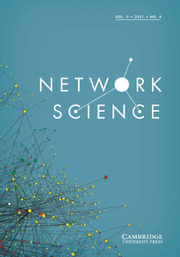Article contents
Assessing the computational complexity of multilayer subgraph detection
Published online by Cambridge University Press: 05 August 2019
Abstract
Multilayer graphs consist of several graphs, called layers, where the vertex set of all layers is the same but each layer has an individual edge set. They are motivated by real-world problems where entities (vertices) are associated via multiple types of relationships (edges in different layers). We chart the border of computational (in)tractability for the class of subgraph detection problems on multilayer graphs, including fundamental problems such as maximum-cardinality matching, finding certain clique relaxations, or path problems. Mostly encountering hardness results, sometimes even for two or three layers, we can also spot some islands of computational tractability.
Keywords
Information
- Type
- Original Article
- Information
- Copyright
- © Cambridge University Press 2019
Footnotes
An extended abstract (Bredereck et al., 2017) appeared in the proceedings of the 10th International Conference on Algorithms and Complexity (CIAC 2017), held in Athens, Greece, May 24–26, 2017. This long version now contains a reorganization and much broader motivation and interpretation of the results, as well as full proofs of all results. Work started while all authors were with TU Berlin.
References
- 7
- Cited by

